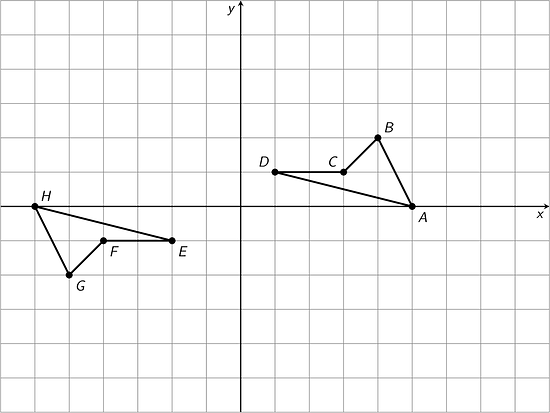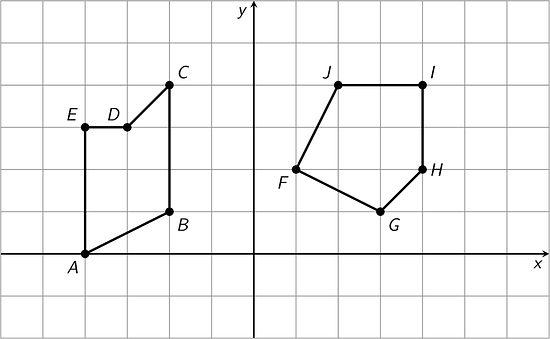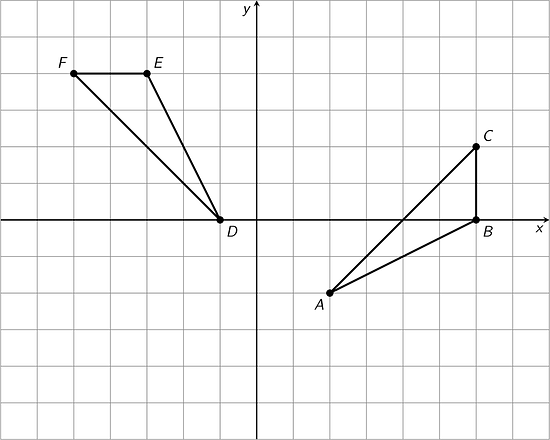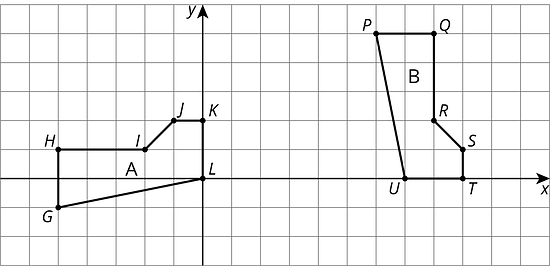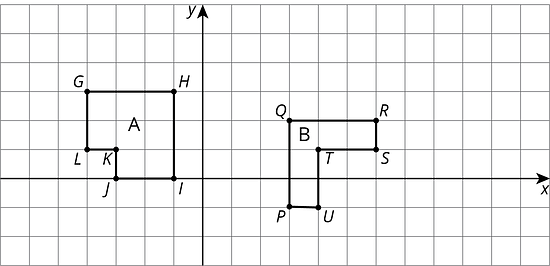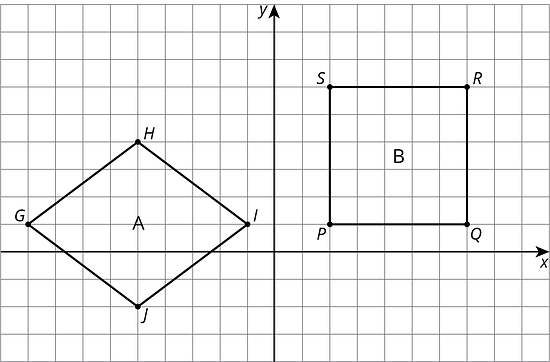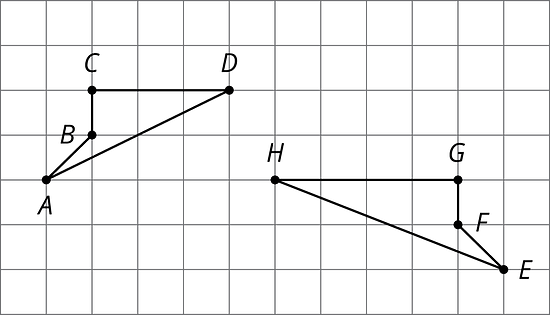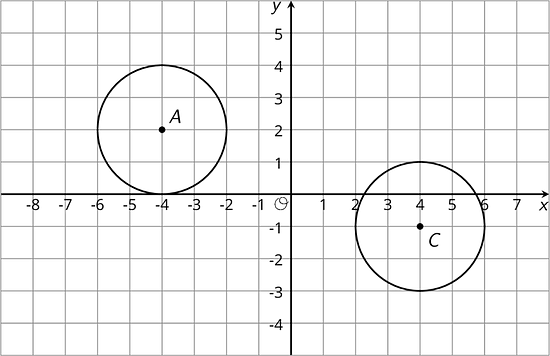Lesson 12Congruent Polygons
Let’s decide if two figures are congruent.
Learning Targets:
- I can decide using rigid transformations whether or not two figures are congruent.
12.1 Translated Images
All of these triangles are congruent. Sometimes we can take one figure to another with a translation. Shade the triangles that are images of triangle under a translation.
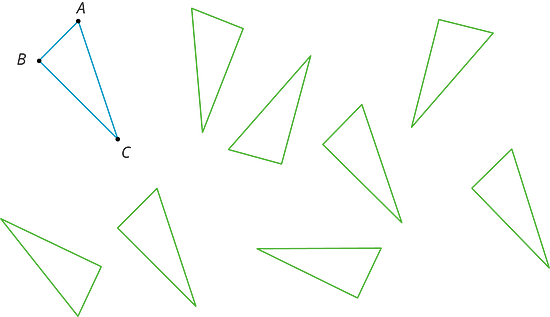
12.2 Congruent Pairs (Part 1)
For each of the following pairs of shapes, decide whether or not they are congruent. Explain your reasoning.
12.3 Congruent Pairs (Part 2)
For each pair of shapes, decide whether or not Shape A is congruent to Shape B. Explain how you know.
Are you ready for more?
A polygon has 8 sides: five of length 1, two of length 2, and one of length 3. All sides lie on grid lines. (It may be helpful to use graph paper when working on this problem.)
-
Find a polygon with these properties.
-
Is there a second polygon, not congruent to your first, with these properties?
12.4 Building Quadrilaterals
Your teacher will give you a set of four objects.
- Make a quadrilateral with your four objects and record what you have made.
-
Compare your quadrilateral with your partner’s. Are they congruent? Explain how you know.
-
Repeat steps 1 and 2, forming different quadrilaterals. If your first quadrilaterals were not congruent, can you build a pair that is? If your first quadrilaterals were congruent, can you build a pair that is not? Explain.
Lesson 12 Summary
How do we know if two figures are congruent?
-
If we copy one figure on tracing paper and move the paper so the copy covers the other figure exactly, then that suggests they are congruent.
-
We can prove that two figures are congruent by describing a sequence of translations, rotations, and reflections that move one figure onto the other so they match up exactly.
How do we know that two figures are not congruent?
-
If there is no correspondence between the figures where the parts have equal measure, that proves that the two figures are not congruent. In particular,
-
If two polygons have different sets of side lengths, they can’t be congruent. For example, the figure on the left has side lengths 3, 2, 1, 1, 2, 1. The figure on the right has side lengths 3, 3, 1, 2, 2, 1. There is no way to make a correspondence between them where all corresponding sides have the same length.

- If two polygons have the same side lengths, but their orders can’t be matched as you go around each polygon, the polygons can’t be congruent. For example, rectangle can’t be congruent to quadrilateral . Even though they both have two sides of length 3 and two sides of length 5, they don’t correspond in the same order. In , the order is 3, 5, 3, 5 or 5, 3, 5, 3; in , the order is 3, 3, 5, 5 or 3, 5, 5, 3 or 5, 5, 3, 3.

-
If two polygons have the same side lengths, in the same order, but different corresponding angles, the polygons can’t be congruent. For example, parallelogram can’t be congruent to rectangle . Even though they have the same side lengths in the same order, the angles are different. All angles in are right angles. In , angles and are less than 90 degrees and angles and are more than 90 degrees.
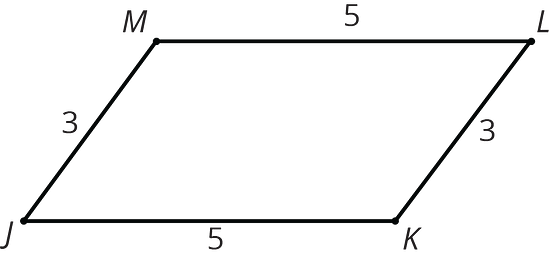
-
Lesson 12 Practice Problems
- Show that the two pentagons are congruent.
- Find the side lengths of and the angle measures of .

For each pair of shapes, decide whether or not the two shapes are congruent. Explain your reasoning.
-
- Draw segment .
- When is rotated around point , the resulting segment is the same as . Where could point be located?
Here is trapezoid .

Using rigid transformations on the trapezoid, build a pattern. Describe some of the rigid transformations you used.
